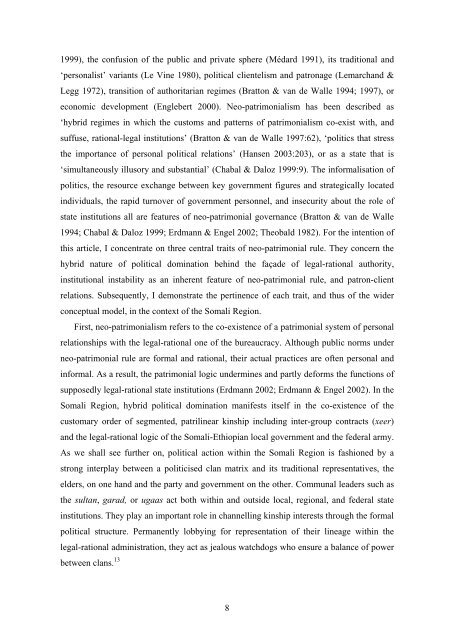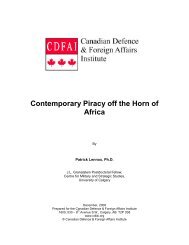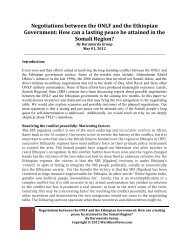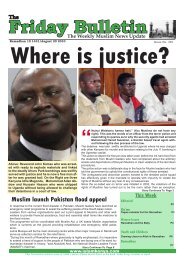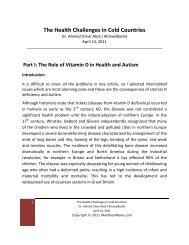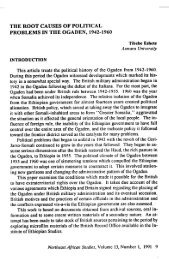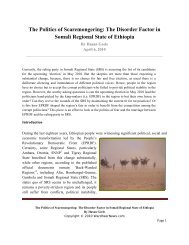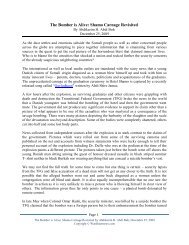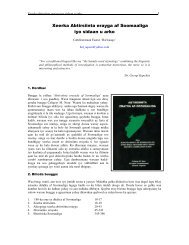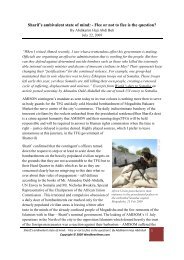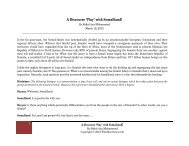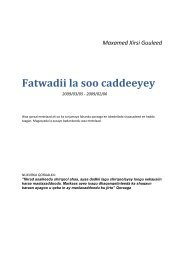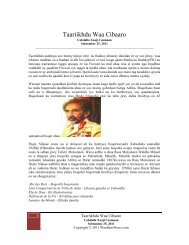View - WardheerNews
View - WardheerNews
View - WardheerNews
You also want an ePaper? Increase the reach of your titles
YUMPU automatically turns print PDFs into web optimized ePapers that Google loves.
1999), the confusion of the public and private sphere (Médard 1991), its traditional and<br />
‘personalist’ variants (Le Vine 1980), political clientelism and patronage (Lemarchand &<br />
Legg 1972), transition of authoritarian regimes (Bratton & van de Walle 1994; 1997), or<br />
economic development (Englebert 2000). Neo-patrimonialism has been described as<br />
‘hybrid regimes in which the customs and patterns of patrimonialism co-exist with, and<br />
suffuse, rational-legal institutions’ (Bratton & van de Walle 1997:62), ‘politics that stress<br />
the importance of personal political relations’ (Hansen 2003:203), or as a state that is<br />
‘simultaneously illusory and substantial’ (Chabal & Daloz 1999:9). The informalisation of<br />
politics, the resource exchange between key government figures and strategically located<br />
individuals, the rapid turnover of government personnel, and insecurity about the role of<br />
state institutions all are features of neo-patrimonial governance (Bratton & van de Walle<br />
1994; Chabal & Daloz 1999; Erdmann & Engel 2002; Theobald 1982). For the intention of<br />
this article, I concentrate on three central traits of neo-patrimonial rule. They concern the<br />
hybrid nature of political domination behind the façade of legal-rational authority,<br />
institutional instability as an inherent feature of neo-patrimonial rule, and patron-client<br />
relations. Subsequently, I demonstrate the pertinence of each trait, and thus of the wider<br />
conceptual model, in the context of the Somali Region.<br />
First, neo-patrimonialism refers to the co-existence of a patrimonial system of personal<br />
relationships with the legal-rational one of the bureaucracy. Although public norms under<br />
neo-patrimonial rule are formal and rational, their actual practices are often personal and<br />
informal. As a result, the patrimonial logic undermines and partly deforms the functions of<br />
supposedly legal-rational state institutions (Erdmann 2002; Erdmann & Engel 2002). In the<br />
Somali Region, hybrid political domination manifests itself in the co-existence of the<br />
customary order of segmented, patrilinear kinship including inter-group contracts (xeer)<br />
and the legal-rational logic of the Somali-Ethiopian local government and the federal army.<br />
As we shall see further on, political action within the Somali Region is fashioned by a<br />
strong interplay between a politicised clan matrix and its traditional representatives, the<br />
elders, on one hand and the party and government on the other. Communal leaders such as<br />
the sultan, garad, or ugaas act both within and outside local, regional, and federal state<br />
institutions. They play an important role in channelling kinship interests through the formal<br />
political structure. Permanently lobbying for representation of their lineage within the<br />
legal-rational administration, they act as jealous watchdogs who ensure a balance of power<br />
between clans. 13<br />
8


